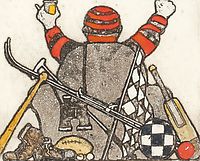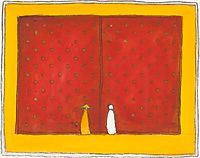Greg Hyde
2015
 |
Addicted to Sport etching 36x36cm |
 |
Door to Understanding etching 36x36cm |
About Greg Hyde
Greg was born in Sydney in 1950 to Russian/Australian parents. As both his parents were trained as commercial artists they encouraged him to paint and sketch from an early age. Although art was not part of the curriculum he and a group of friends began painting and exhibiting at school and worked to establish a gallery as part of the regular life of the school.
In 1968-71 Greg studied medicine but decided to take a years leave of absence to travel and visit galleries. He visited USA briefly and then spent two years living and painting in England. He made a brief visit to Russia in 1973 to connect with his heritage and there he developed an abiding love of the iconographic tradition.
In 1976-77 Greg and his young family went to live in the countryside in Greece. There he developed a strong rapport with this ancient landscape deeply imbued with myth. His feelings for the colour, texture and spirituality of this landscape continue to haunt his paintings.
On returning to Australia, Greg and his family moved to a small farm outside Bathurst to create a home which expresses a love of the places that they have visited, and a commitment to a lifestyle which is in harmony with the Australian environment.
Greg’s paintings reflect this harmony. He has developed a style which combines his love of the European tradition with an insightful use of the natural features and cultural phenomena of traditional and modern Australia to create a personal iconography.
Greg works in various media from oils to etchings and has illustrated several children’s books. Over the years he has had one man exhibitions in Sydney, Melbourne, Canberra and Brisbane and regularly participates in group exhibitions throughout Australia. He has exhibited in the Wynne and Archibald Prizes and his work is represented in Australian and overseas collections.
Greg’s work is usually colourful and often whimsical, he says, with a twist of pseudo-intellectual aestheticism. This, he hopes, is vaguely relevant to today.